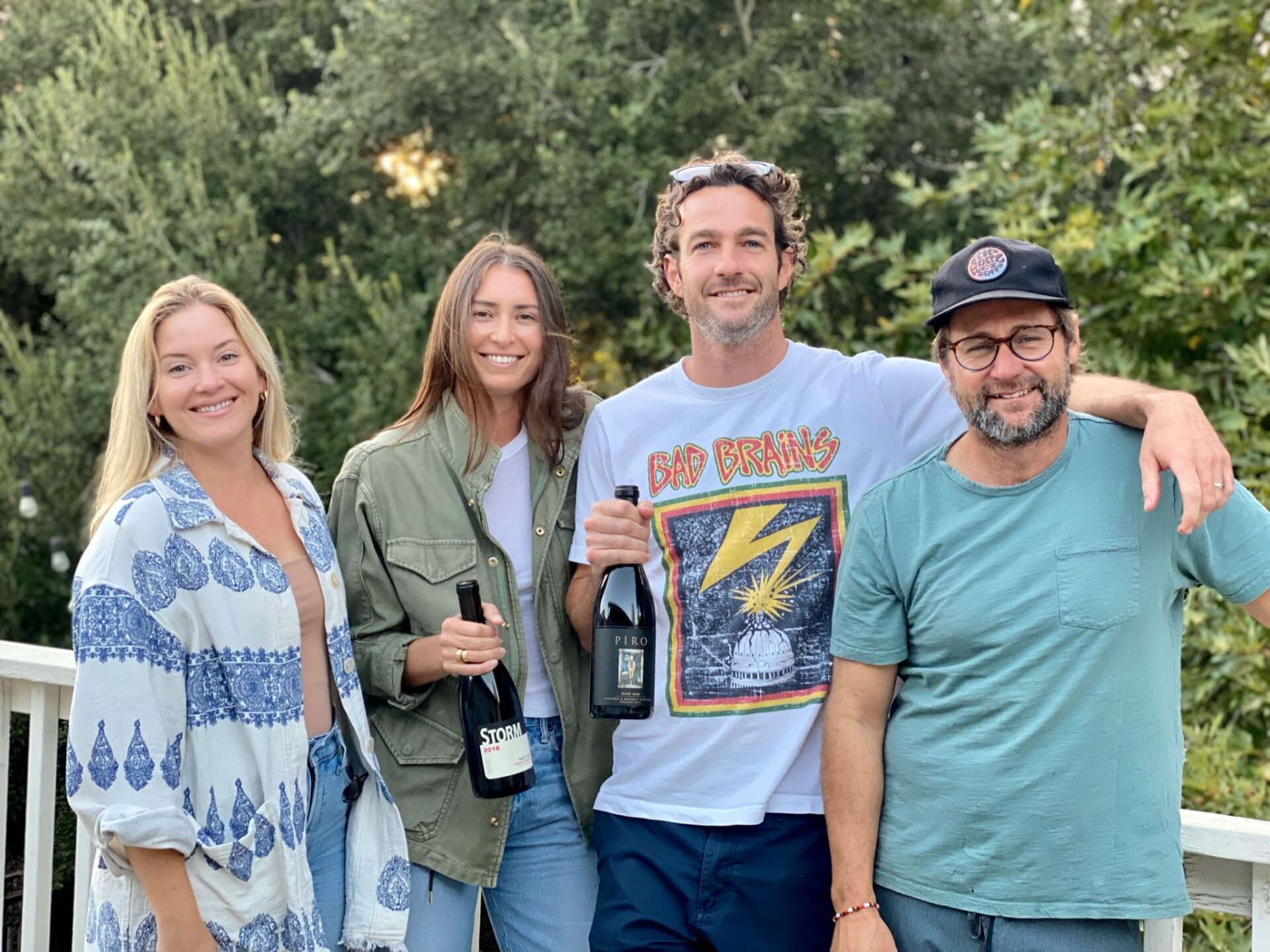Shop Pinot Noir Wines
Pronounced: pee-no-nwar; AKA: Pinot Nero, Spätburgunder (Germany), Blauburgunder (Austria)
This elusive and delicate light-bodied grape is a wine grower's dream, but can be difficult to achieve as Pinot Noir is susceptible to a variety of diseases, making it difficult to grow. Stubborn, yet flirtatious, Pinot Noir wine is somewhat tantalizing, creating a beautiful dance between the grape and the winemaker. The resulting light red wine can be nothing short of spectacular. Loved for its red fruit and spicy characteristics, its also a great food partner.
- Common aromas and flavors: Cherry, Raspberry, Mushroom, Hibiscus, Clove, Vanilla; However, this can vary greatly depending on the vintage and where it grown.
- Indicators and Descriptors: Pale – Medium Ruby, Dry, Aromatic, Medium-bodied, Medium-High Acidity, Low Tannins
- Significant Growing Regions: Pinot Noir generally prefers intermediate, continental climates with long, cool growing seasons. That is why we often find Pinot Noir grown within protected valleys or near large bodies of water. Look for these places: Burgundy, France; Oregon and Coastal California; Germany; New Zealand; Italy; and Australia.
- Food Pairings: Pinot Noir is everyone’s best friend. It is light enough to pair some fish like Salmon, but complex enough to stand up to Duck and strong earthy-flavored dishes. If you’re ever in a pinch at a restaurant with multiple meal options, or need to pick up a bottle for your friend’s dinner party, sticking with Pinot Noir is a great way to go! We love it with: Duck, Salmon, BBQ, Turkey, Pork Roast, Roasted Chicken, Tacos, Charcuterie; For veggies: Mushrooms, Beets, Eggplant, Truffles, Root Vegetables
- How to Serve: Pinot Noir is great red wine to try with a sight chill. It can handle a little bit of a cooler temperature than that of room temp, ideally between 55-60°F (12-15°C). The slightly cooler temperature highlights the aromatic profile while keeping the alcohol from overwhelming the senses. If you are fascinated with varietal-specific glassware, try drinking Pinot Noir out of glass with a wide bowl and narrower rim. It allows the wine to breathe and funnels the nuanced aromas straight to your nose.
Fun Facts:
- Pinot Noir is older than Cabernet Sauvignon… by over 1,000 years! This grape goes all the way back to the Roman era. Currently with over 1,000 registered clones, the grape’s genetic instability and constant evolution is a true testament to its old age.
- While most people associate Pinot Noir with its age-worthy red wines, this grape is also a key component to making some of the world’s finest sparkling wines (i.e. Champagne).
Choose yourstyle
Filters
-
$55.00
Scribe, a pioneer of terroir-driven winemaking in Sonoma, makes one of our all-time favorite Pinots. Invite a few close friends over for an intimate dinner, light some candles, play some jazz and serve wild mushroom risotto topped with fish, chicken or as is! This Pinot will go with it all.
Organic farming practices, hand-harvested, native yeast fermentation (30% whole cluster), and aged 7 months in neutral oak with minimal intervention.
-
$58.00
This Pinot Noir is shaped by brisk Pacific winds, ancient marine soils, and one of the longest growing seasons in California. It’s cool-climate Pinot at its best and is meant to be enjoyed with a slight chill, just as the sun is setting and the grill is going—cedar-plank salmon, charred leeks, broccolini, wild mushrooms, and a farro salad.
Organic farming practices, native yeast fermentation, neutral oak aging, family-owned, less than 500 cases produced.
-
$60.00
Crafted by the acclaimed Ernst Storm, this wine shows off everything we love about Sta. Rita Hills Pinot—lifted aromatics, pure red fruit, earthy undertones and silky tannins. A team favorite, this Pinot never fails to impress, no matter who’s at the table or what’s on the menu. It strikes that rare balance of elegance and approachability—making it a staple in our cellar.
Organic farming practices, native yeast fermentation, neutral oak aging, family-owned, less than 500 cases produced.








